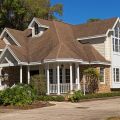The Hidden Risk: How Fire Damage Can Lead to Mold Growth in Bay Area Properties

While fire damage is often immediately visible and destructive, a less obvious but equally serious risk can develop after the flames are extinguished—mold growth. Water used to put out fires, combined with structural damage, creates ideal conditions for mold to thrive. For both residential and commercial properties in the Bay Area, addressing this hidden risk promptly is crucial to protecting health, preserving property value, and preventing long-term structural issues.
How Fire Damage Sets the Stage for Mold
Firefighting efforts often involve large amounts of water to control flames and prevent further destruction. While necessary, this water can saturate walls, ceilings, floors, and insulation. Additionally, fire-damaged structures may develop leaks or openings, allowing moisture to seep into hidden areas. This combination of water and compromised materials provides the perfect environment for mold spores to grow.
Mold spores are naturally present in the air and can start to multiply within 24–48 hours of water exposure. Fire-damaged properties that are not dried and inspected professionally are particularly vulnerable, making post-fire mold a hidden but serious threat.
Common Signs of Mold After a Fire
Even after the visible fire damage is repaired, property owners should remain vigilant for mold growth. Common signs include:
-
Musty Odors: A persistent, earthy smell often indicates hidden mold behind walls, under floors, or in attics.
-
Discoloration: Water-stained areas may darken or develop green, black, or white mold patches.
-
Health Symptoms: Occupants may experience coughing, sneezing, or respiratory irritation.
-
Peeling or Bubbling Paint: Moisture trapped beneath surfaces can cause finishes to deteriorate.
Detecting mold early is key. While some signs are visible, many infestations remain hidden, necessitating professional mold inspection and testing.
Health Risks of Mold in Fire-Damaged Properties
Mold growth can pose significant health hazards, especially in fire-damaged buildings where dust and debris may already compromise air quality. Exposure to mold spores can lead to:
-
Allergic reactions such as sneezing, runny nose, and skin irritation
-
Respiratory problems including coughing, wheezing, and asthma flare-ups
-
Eye and throat irritation
-
In severe cases, prolonged exposure may impact the immune system or cause chronic respiratory conditions
For families, employees, and customers, these risks highlight the importance of addressing mold promptly after fire damage.
How Professional Mold Testing Preserves Property Value
After a fire, property owners may focus on visible repairs and structural restoration. However, ignoring hidden mold can lead to long-term damage and costly repairs, ultimately reducing property value. Professional mold testing offers several benefits:
1. Accurate Detection: Certified mold inspectors like Rick Bruce use specialized tools and testing methods to identify mold growth, including areas that are not visible to the naked eye.
2. Documentation for Insurance and Restoration: Detailed reports provide evidence for insurance claims and guide restoration efforts, ensuring proper remediation.
3. Targeted Remediation: Knowing the type and extent of mold allows for precise remediation, reducing the risk of recurring growth.
4. Health and Safety Assurance: Professional mold testing ensures that indoor air quality is safe for occupants after cleanup.
The Bay Area Mold Pros Advantage
Rick Bruce, a certified mold inspector with Bay Area Mold Pros, specializes in post-fire mold inspection and testing. Whether for residential or commercial properties, Rick provides comprehensive assessments to identify hidden mold risks and document findings for insurance or restoration purposes. With certified expertise, he helps property owners mitigate damage, protect health, and maintain property value.
Steps to Take After Fire Damage
1. Secure the Property: Ensure the area is safe and prevent unauthorized access.
2. Dry Out the Property: Begin water removal and drying as quickly as possible to minimize mold growth.
3. Contact a Certified Mold Inspector: Schedule a professional mold inspection to identify hidden contamination.
4. Document Damage and Mold Findings: Keep records for insurance purposes and remediation planning.
5. Begin Remediation Promptly: Follow professional recommendations to safely remove mold and restore property integrity.
Request a Professional Mold Inspection
Mold growth is a hidden but serious consequence of fire damage. Professional mold testing ensures early detection, supports insurance claims, and protects both health and property value. For properties in the Bay Area, Rick Bruce at Bay Area Mold Pros provides certified mold inspection and testing services to address these risks efficiently and effectively.
Request an inspection today at (650) 762-6228 or visit Bay Area Mold Pros



